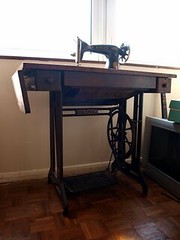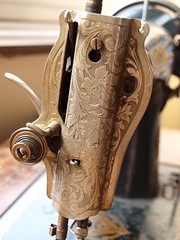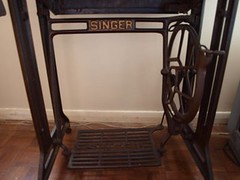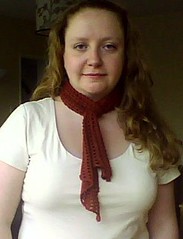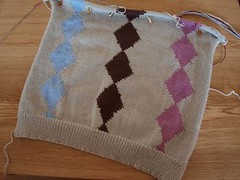Steven and I took a day-trip to Whitstable yesterday to celebrate my first day of freedom after the latest batch of exams. It was just supposed to be a nice trip in the car with some lunch, a wander round some shops and then home again. Except that one of the shops, a small junk shop right on the sea-front, had this:
A 1940s Model 15K Singer treadle sewing machine and treadle table in what appeared to be almost working order.
And, yes, that is our lounge that it’s now sitting in.
The advantage of buying a Singer machine is that there is a lot of information out there on how to identify and date them. Looking up the serial number of our machine on the Singer website, I identified the type and learned that it was one of a batch of 300,000 built in Clydebank, Scotland between November 1945 and August 1946. In fact, I spent almost the entire evening reading about the history of the Singer Manufacturing Company and the factory in Clydebank.
I love the detailing and aesthetic of these machines and have been admiring them from afar for years. It’s so pretty that we decided it would look great as a piece of furniture even if we never got it working, although both of us thought we’d like to see it sew something at least once. However, the more I read about these machines and how good they are for sewing and, in particular, quilting, the more tempted I am to get it fully set up and learn how to use it properly.
I don’t think it will be too difficult (famous last words!) to get it working properly again. The machine needs a new belt (already ordered), a good clean and some oil, and the woodwork needs some restoration. The ironwork just needs cleaned. The worst part is going to be removing all the dead spiders from the inside.
The other advantage of getting it working is that it came with a wide range of different attachments for hemming, quilting, and attaching cord and bindings that would cost me a fortune to buy for my electric machine. More details of those and the other contents of the table drawers to come in my next post.
